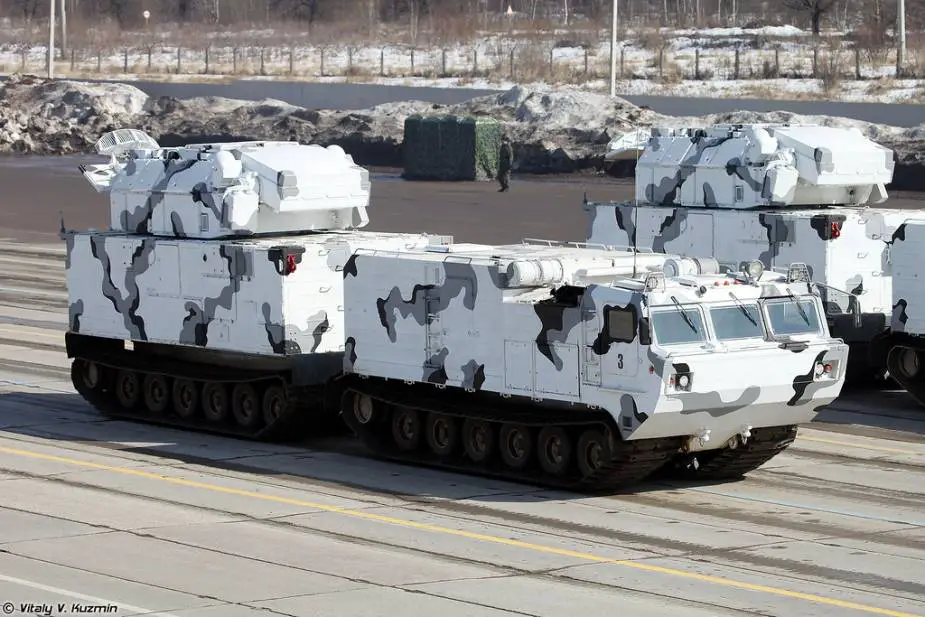Russian Army maintains air defense in Arctic
The Russian military has maintained its air defense capabilities in the Arctic in recent years: S-400 (SA-21 Growler) air defense systems (ADSs), Tor-M2DT (SA-15 Gauntlet) surface-to-air missile (SAM) systems, and other platforms have been deployed across the region, and the servicemen intensively use them during various exercises.
Follow Army Recognition on Google News at this link

9K331MDT Tor-M2DT air defense system on DT-30PM transporter chassis (Picture source: Vitaly Kuzmin)
In particular, the Izvestia newspaper cites a military source, according to which the military held an exercise to check the functioning of radars covering Russia’s north-eastern part in early 2021. During the drills, the servicemen successfully practiced detecting stealth unmanned aerial vehicles (UAVs) flying at various altitudes. Air defense and radar units also trained cohesion during repelling this kind of threat.
In early July 2020, the Russian Ministry of Defense (MoD) reported that a separate radar unit stationed on Wrangel Island used the Sopka-2 radar during an exercise. The servicemen detected a group of low-size UAV-type aerial targets flying at various altitudes and speeds, recognized them, gathered and analyzed data, and transferred target information to a command post of the Eastern Military District (EMD) air defense. According to the MoD, the same exercise was repeated in December 2020.
The Sopka-2 tracing radar was activated on Wrangel Island in 2016. Its main task is to gather and analyze air activities in the Arctic. Owing to its high resolution, the station is capable of detecting separate targets in an air group. The Sopka-2 features a protective dome and works at temperatures of up to -40C and at a wind speed of up to 40 m/s. In early 2017, an EMD air defense unit practiced monitoring and detecting aerial targets in the Arctic.
In May 2017, the MoD reported a contract between the military and the Lianozovo Electromechanical Plant (LEMZ, a subsidiary of Almaz-Antey) for Sopka-2 radars under the State Defence Order (Gosoboronzakaz) for 2017. In May 2018, the Northern Fleet was to receive six Sopka-2 radars.
In 2017, the EMD received two Sopka-2s: one radar was delivered to an air defense unit in Zabaikalsky Krai in September, while the remaining radar was delivered to a unit stationed in Primorye. The radars were to be activated in 2018.
In August 2018, the Belorussian MoD and Almaz-Antey signed a contract for a stationary Sopka-2 radar at the Army-2018 international military-technical forum. The press department of Almaz-Antey reported that this was the first export delivery of the Sopka-2. Belorussia activated the radar in December 2020.
Therefore, Russia continues maintaining its air defense capacities in the Arctic and shores up both air defense and radar detection capabilities. Considering the location of Wrangel Island near the Northern Sea Route, the deployment of tracing radars there seems to be a necessary and effective solution.
© Copyright 2021 TASS / Army Recognition Group SPRL. All rights reserved. This material may not be published, broadcast, rewritten or redistributed.


























